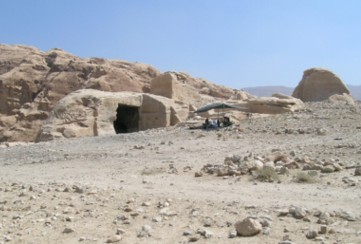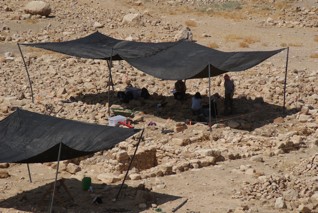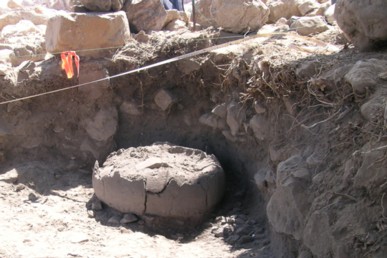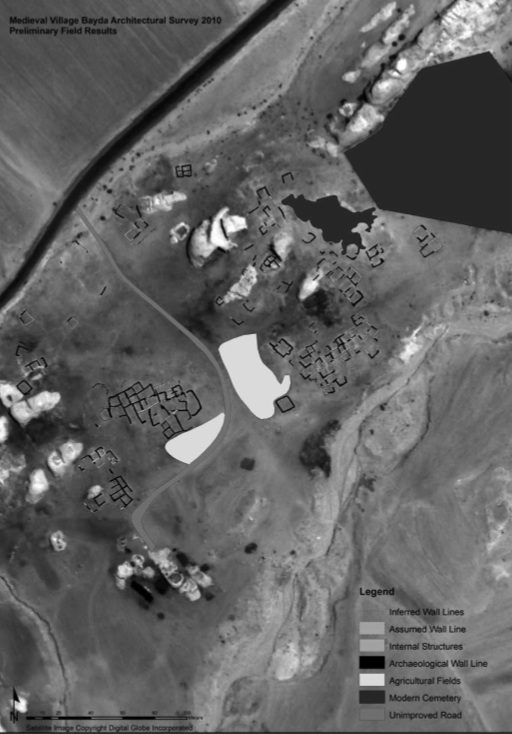

2010 excavations at Islamic Bayda, Trench B (left); Trench A (right)
About BIV
The post-Byzantine periods in southern Jordan are currently understudied, especially in regard to village life and ceramic chronologies. For this reason, the excavation and survey of the Bayda Islamic Village (BIV) is particularly important. The BUPAP team excavated two trenches at the site during the 2010 season. The first, Trench A, is likely situated in the courtyard of a house, adjacent to rooms excavated by Patricia Bikai during 2004. The levels excavated in 2010 have been tentatively dated to the 14th-16th centuries CE. In situ in one corner of the trench was the lower half of a tabun, or ceramic bread oven; additional fragments of upper part of this vessel were found in the layer of wall collapse directly above it. Several spindle whorls were found in the same layer as the tabun elsewhere in the trench, indicating that the courtyard may have been used for spinning and weaving. In lower levels, a cluster of small preserved postholes was discovered near the western wall of the courtyard; these postholes, each with a diameter of 5 cm, may have resulted from a small wooden structure or piece of furniture placed against the wall. In addition, we found at least two areas with high concentrations of raw clay, burnt limestone, ground sandstone, and ash, which were possibly related to pottery production. These areas are potentially of great importance to the study of pottery from this period. We will continue work in this area in the summer of 2011 to clarify the function of the possible pottery production areas and to investigate how the space was used in earlier eras. Trench B, the second area excavated, was opened in the eastern part of the village (adjacent to a limestone outcrop near the Byzantine church) to obtain a deeper stratigraphic profile of this area of the site. At least three distinct occupational phases were evident in the stratigraphy, and the documentation of these phases will assist in the refinement of pottery chronologies for the site. Trench B also produced a possible Islamic coin, which will be cleaned and read by specialists. In the future, we will open a second trench on the opposite side of the outcrop to investigate this area further. In 2010, the BUPAP team also worked to contextualize our trenches within the wider village and the surrounding landscape through both architectural and pedestrian survey. The above-ground remains of the village were surveyed with a total station to produce a preliminary map of the village (see map below). Additionally, a pedestrian survey of the entire village and its surrounding areas was conducted as a part of the larger PAWS project (see PAWS page).

Ceramic tabun during excavation

Total station survey of architectural remains at Islamic Bayda
See pages on The 2010 Season and The 2011 Season for more information about BIV.
Home | People | PUMA | PAWS | BIV | PRP | The 2010 Season | The 2011 Season | The 2012 Season | Bibliography | JIAAW | Credits
